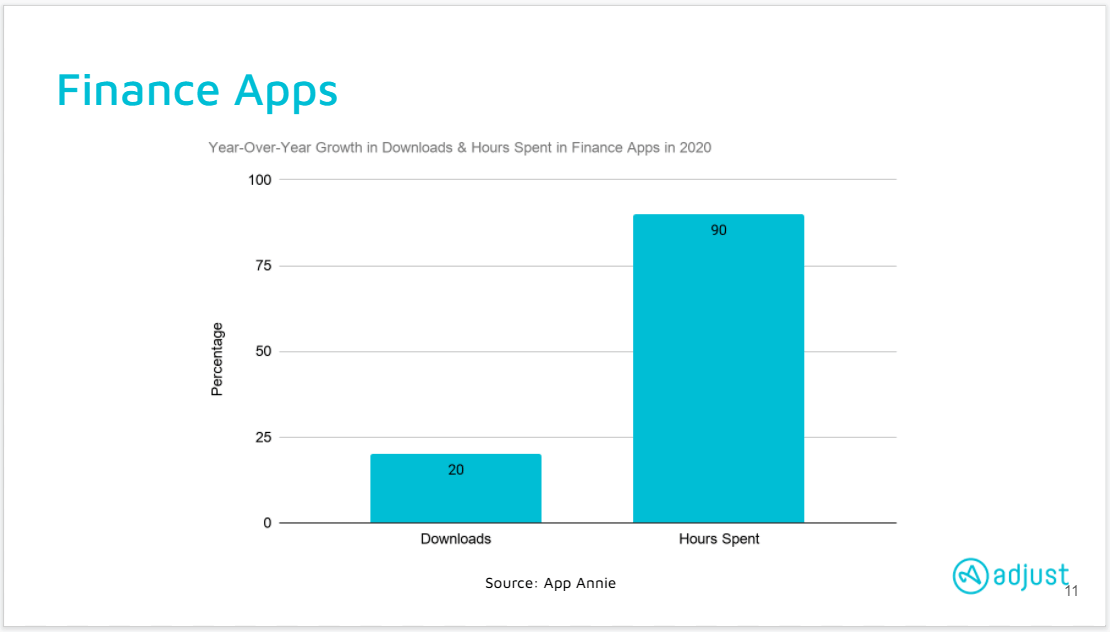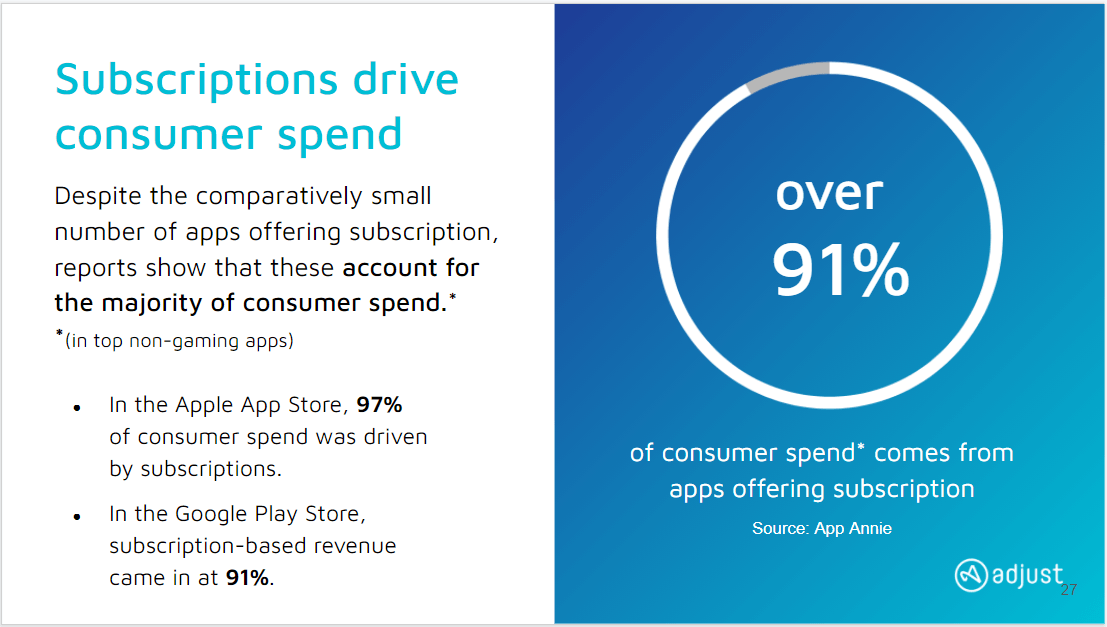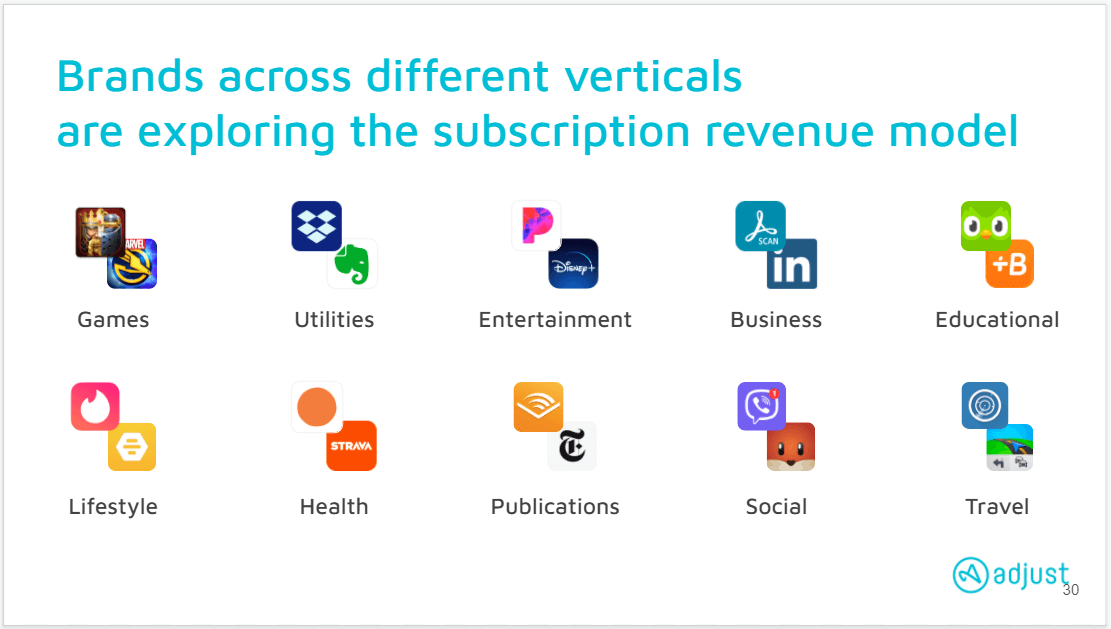In part three of our Reimagine Growth masterclass series, Jenien Lim, Senior CS Manager at Adjust and Adam Hadi, VP of Marketing at Current talked about which mobile app marketing strategies have been most effective over the past year.
Below we present some highlights of their conversation as they tackled everything from current mobile trends to effective tactics that mobile brands should be using to survive and thrive this year.
Customer Behavior Trends that Carry Into 2021
Mobile adoption boomed in 2020. Some stats:
- Worldwide, consumers spent $143 billion via mobile devices at 20% growth YoY*
- The average adult spent 3 hours 35 minutes in mobile apps daily, up 20% from 2019*
- Boomers led the way, increasing their mobile usage by 30%, while GenZ increased by 16%, and Millennials 18%.*
Two to three years of mobile adoption were accelerated into the last 12 months. What that means is the strategies that mobile marketers were planning to explore and employ over the next two to three years must begin now.
Most verticals saw a spike due to the pandemic, besides travel and events of course. There were clear winners in social networking apps, streaming video, gaming, health and fitness, business, ecommerce, education, food delivery, finance, and news.
But let’s focus on three distinct verticals that crushed it in 2020, and each with their own unique strategy: social networking, Fintech, and video streaming.
3 Winning Strategies from 3 Winning Verticals
Social: Using TikTok Virality to Reach Gen Z
Jenien Lim, Senior CS Manager at Adjust shares that in social networking apps, the clear winner was TikTok, which had a blowout year in 2020: “They showed 325% YoY growth. They disclosed that they had 92 million MAUs in June 2020, which was up from 40 million MAUs in October of 2019. They’re now on track to hit 1.2 billion MAUs in 2021.”
But should mobile brands be using TikTok as a channel in their campaigns?
Current has actually been doing influencer campaigns on TikTok since it was known as Musical.ly. And it’s a big part of their marketing strategy.
“When you look at the demographic in which we are banking, it’s largely Gen Z, very very young,” says Adam Hadi, VP of Marketing at Current. “It aligns very much with TikTok not just in terms of where they spend their time, but also, for a lot of customers, it symbolizes an opportunity.”
He explains how for 23-year olds today, all the major channels have their big influencers who have been working nonstop to amss millions of followers on Instagram, YouTube, and so on. And TikTok is the opposite, since it has democratized going viral. Unlike other networks where success is very much based on your social graph, TikTok is about content.
“If you put out a good piece of content, TikTok will surface it to lots and lots of people,” says Hadi.” So I think it gives them this really exciting opportunity. And that aligns with us as a brand as well. We’re (Current) trying to open up financial opportunities that have traditionally been closed to the younger generation.”
Takeaways:
- Go where your customers congregate! If your target audience is on a new social network, then explore that channel.
- Diversify your network partners in that new channel — find and partner with those influencers who embody your brand and make your mission exciting.
- But also remember to be social — which means, be human. It’s a social network, so communicate like a real person, not a faceless corporate robot.
Fintech: Giving Consumers a Purely Digital Experience
“The US saw 20% more downloads and a 90% increase in hours spent in Fintech apps,” says Lim from Adjust. “This was actually up 45% worldwide with the exception of China.”
For the most part of 2020, physical banks were closed. But the pandemic acted as an accelerant, pushing the trend toward digital banking further and faster.
Getting comfortable doing all your banking from your smartphone — that has a lot of implications. Having physical branches is no longer an absolute necessity, although they still do offer a lot in terms of relationship building and gaining customers’ trust. And those are things that financial services need to overcome as they become a primarily digital experience.
Hadi shares: “For the first time ever, my mom asked me ‘How do you deposit a check using the phone?’ And now that she knows how, she’s not now going to go back to depositing checks in a branch, right? So that’s a trend that will stay.”
And it’s the same story over and over again in other industries that have had to suddenly deal with full digitalization.
Takeaway:
- Make your customer experience irresistible. Because your app is competing with every other app for time and attention online, your only differentiator is the customer experience. If you can craft an experience that answers every need your user has, or takes into account every preference, why would they use another app?
Video Streaming: Making Subscriptions Ubiquitous
With everyone still at home, video streaming surged and saw 40% more hours streamed on mobile in 2020. Premium subscription services, such as Netflix, Disney+, and Hulu increased their viewership numbers by 13%, which is a significantly bigger growth rate than anyone anticipated pre-pandemic. And about 22% of that time was spent on video streaming apps on mobile devices. Lastly, the usage of games on connected TVs went up 73%. Which isn’t surprising considering everyone was at home and bored.
More apps on all verticals are experimenting or moving towards a subscription revenue model in 2021 because subscriptions drive consumer spend.
In the Apple App Store, 97% of consumer spend was driven by subscriptions in top non-gaming apps. In the Google Play store, subscription-based revenue came in at 91%.
“To meet that changing user behavior, we’ve seen the diversification of monetization models for advertisers and publishers,” says Lim, “Publishers have been shifting away from in-app advertising and towards in-app purchases, since the pandemic led to this pullback in ad spend — especially in the early months when many of those new app users weren’t as eager to spend heavily. So now what we’re seeing is consumers are more apt to sign up for subscriptions and accept hybrid models of monetization, which is a combination of in-app advertising and in-app purchases.”
Hadi says: “There are tons of advantages to the subscription model. The advantage a lot of business people will think of immediately is just that recurring revenue, and the predictability of that retention. That makes a lot of sense. But from a product standpoint, it also allows businesses to align with their customers. Almost like: we have the subscription out of the way, now it’s about our brand giving you the best experience possible.”
“If you’re a financial service and your business is on an ala carte basis, that’s like nickel and diming your customers. At Current, our entire ethos is that we have no hidden fees, no surprises. We have a basic product that is totally free and we have a premium product that is a subscription for $5 a month. And that means it’s on us to deliver as great an experience as possible.”
Takeaways:
- Retention is the new growth. And subscriptions can get you that retention quickly — but only if it fits your app or service.
- Users won’t subscribe unless they see real value from your app and your service. Which ones again boils down to: are you giving customers an experience worth returning to?
Are You Optimizing the Customer Experience?
CleverTap asked 2,000 users why they uninstalled an app, and a majority of them said it was due to a “poor customer experience.” This makes it essential for brands to provide users with engaging experiences no matter which vertical they’re in, and give customers the royal treatment at every stage of the customer lifecycle.
In this pocket guide, we cover how marketers can wow app users and build an experience that results in higher customer satisfaction and CLTV.

The Experience Optimization Pocket Guide
Shivkumar M 
Head Product Launches, Adoption, & Evangelism.Expert in cross channel marketing strategies & platforms.
Free Customer Engagement Guides
Join our newsletter for actionable tips and proven strategies to grow your business and engage your customers.















































